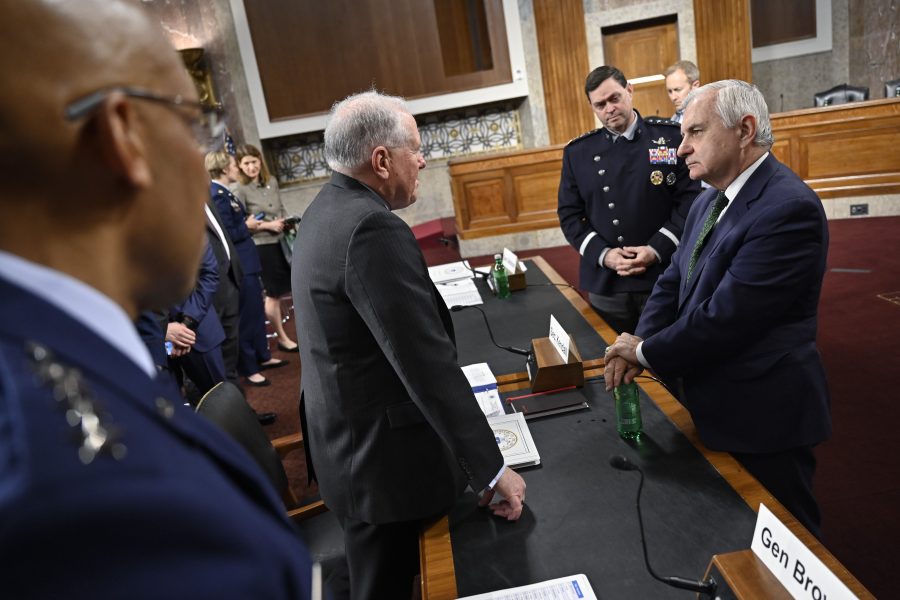The Air Force will be required to produce a new report on its future Force Design by the end of next summer.
A provision of the 2024 National Defense Authorization Act will require the Secretary of the Air Force to develop a force design for the Air Force and Space Force projected through 2050—a sweeping review of the capabilities, organizational structures, policies, and more that the services will need to meet the National Defense Strategy.
The department’s ongoing re-optimization review, implemented by Secretary Frank Kendall this fall, will likely inform that force design, which will be due by Aug. 31, 2024.
“The background of this provision is a long struggle between the Department of the Air Force and Congress over force structure,” said Becca Wasser, a senior defense fellow at the Center for a New American Security. “Year after year, Congress has pushed back against USAF attempts to retire legacy aircraft as part of its force modernization efforts. This provision may be an attempt to get the USAF to elucidate its preferred force mix so Congress can influence force design as it sees fit.”
The long-term force design would give Kendall, Air Force Chief of Staff Gen. David W. Allvin, and Chief of Space Operations Gen. B. Chance Saltzman a chance to shape more concrete visions for the future Air Force and Space Force—a provision some former officers have suggested Kendall welcomes.
Kendall could use the study to explain the reasoning behind key decisions like retiring aircraft, re-optimizing the organizational structure, and adjusting personnel levels, one former senior officer said.
Outside experts say the provision is a good way for the DAF to articulate its long-term goals—and not just for the elder service.
“The forcing function of putting the answers in concrete terms will benefit the Space Force as it contends for space in inter-service competitions,” added Hannah Dennis, a defense research associate at CNAS. “It will also benefit the American public and Congress, who clearly still have questions about the service’s purpose and its often unique approach to manning, training, and equipping.”
The Marine Corps embarked on a similar effort with their “Force Design 2030,” which marked a fundamental shift for the service and sparked considerable soul-searching on the part of its leaders.
“It’s even more important today because, for the last three decades, the success or failure of U.S. military campaigns really did not fundamentally threaten America’s existential security interests,” said retired Lt. Gen. David A. Deptula, dean of the Mitchell Institute for Aerospace Studies, pointing to the threat posed by China. “What is required of the Air Force to meet the needs of the National Security Strategy and National Defense Strategy? Whether or not that gets resourced is a separate discussion, but you have to identify what the needs are for the Air Force to meet the demands of our strategy.”
The law will also require several other long-term plans, including:
- Fighter jets. A 12-year fighter force structure plan, delivered by April 1, 2024, defining “the rationale for any plans to activate, divest, deactivate, or change the mission of any unit” and “any plans of the Secretary to augment or supplant existing piloted tactical fighter aircraft capability or capacity with Collaborative Combat Aircraft.”
- Preserving Skills. A plan for maintaining units and proficient air crews for mission areas like close air support, combat search and rescue, and airborne battle management
- Satellite Communications. A plan for an “integrated and resilient satellite communications architecture for the Space Force” as part of the service’s larger force design, with special consideration for a constellation of small satellites in geosynchronous orbit
- Nuclear Modernization. A new integrated master schedule for the LGM-35 Sentinel intercontinental ballistic missile, which is slated to replace the aging Minuteman III ICBM but has been “struggling” as a program, according to top officials.
